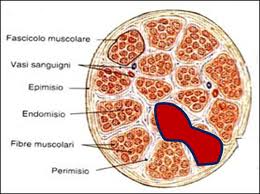MUSCLE INJURIES: A LITTLE CLARITY
- Details
- Parent Category: Novi
- Hits: 4653
 The other pill, as promised. We'll talk about muscle injuries, trying to shed light on a topic where there is more than a few doubts. Muscle injuries are among the most common injuries in sports medicine. Under this generic term including diseases involving an actual muscle damage (direct trauma injuries or bruises and indirect trauma injuries or tears – distrattive lesions) or milder clinical picture which do not cause a true lesion of muscle fibers (contractions and stretching). The most frequent causes of muscle injuries depend on:
The other pill, as promised. We'll talk about muscle injuries, trying to shed light on a topic where there is more than a few doubts. Muscle injuries are among the most common injuries in sports medicine. Under this generic term including diseases involving an actual muscle damage (direct trauma injuries or bruises and indirect trauma injuries or tears – distrattive lesions) or milder clinical picture which do not cause a true lesion of muscle fibers (contractions and stretching). The most frequent causes of muscle injuries depend on:-excessive fatigue
-muscle imbalances
-excessive muscle tensions
-not heating properly
-poor muscle coordination
-insufficient recovery
-climatic environmental factors
-irregular land
CLASSIFICATION
DIRECT TRAUMA OR BRUISING
-mild
-moderate
-severa
INDIRECT TRAUMA
-Contracture
-stretching
Grade 1
-distrattiva (RIP) lesion grade II
Grade III
In the brief discussion we will present exclusively of muscle injuries by indirect trauma, the most frequent in the runner.
CONTRACTURE
The athlete who procures a Contracture is a nuisance which does not prevent him from finishing the race. The pain appears after the end of the race or the next day. The pathological anatomy of the ipercontratto muscle is molting. There is a real injury of the myofibril, but a widespread increase of the muscle tone of the whole or a part of it as reaction to a stimulus too intense and prolonged.
STRETCHING
Muscle stretching is characterized by pain that develops gradually during sport activity, without thereby giving an immediate functional impotence and, generally, does not prevent the continuation of the training or the race. The athlete who produces a muscle strain is able to detect the onset of symptoms without colluding to a certain technical gesture. In these cases you should abort the task to avoid complicating the potential evolutionary framework to the lesion distrattiva. Even in the stretch, as the Contracture, there is anatomical macroscopic damage of muscle fibers. Clinically it detects a widespread increase in muscle tone: muscle has an area well localizable which can extend like a real painful cord throughout the affected area from the lesion.
DISTRATTIVA – TEAR INJURY
The lesion distrattiva (RIP) is characterized by the breakdown of muscle fibers, more or less extensive. The pain is acute and occur suddenly, with precise reference to the technical gesture is localizable into a precise point of muscle and functional impotence is all the more serious as early is the lesion. The clinical picture, forcing the athlete to immediately stop sport. The exam objective, if done early enough, may show some sort of "kerb" or a true destruction of the affected muscle. The muscle loses its ability to stretch. Are recognized three severity levels in relation to the percentage of muscle diameter affected by injury.
Grade 1: the lesion affects less than 5% of muscle fibers and remains confined within the single file
(II) grade: incomplete break my drive-drop down box with percentage involvement involving up to 50% of the fibres
GRADE III: the break affects more than 50% of full fibre tear up. When the lesion affects my joint-tendon, regardless of the percentage of fibres involved, is classified in this grade In all degrees of severity it makes blood effusion that is greater the higher the number of fibers affected. You must intervene immediately with ice, elevation of the limb, compression and rest functional (RICE Protocol). Instrumental diagnostic purposes execute within 48-72 hours an ultrasound exam, able to define with extreme precision location and extent of damage muscles, in order to plan a correct therapeutic path and dictate the timing for a resumption of sport without risk to the athlete.
Thank you for your attention and. ... to the next administration.
Marco Scrocca
